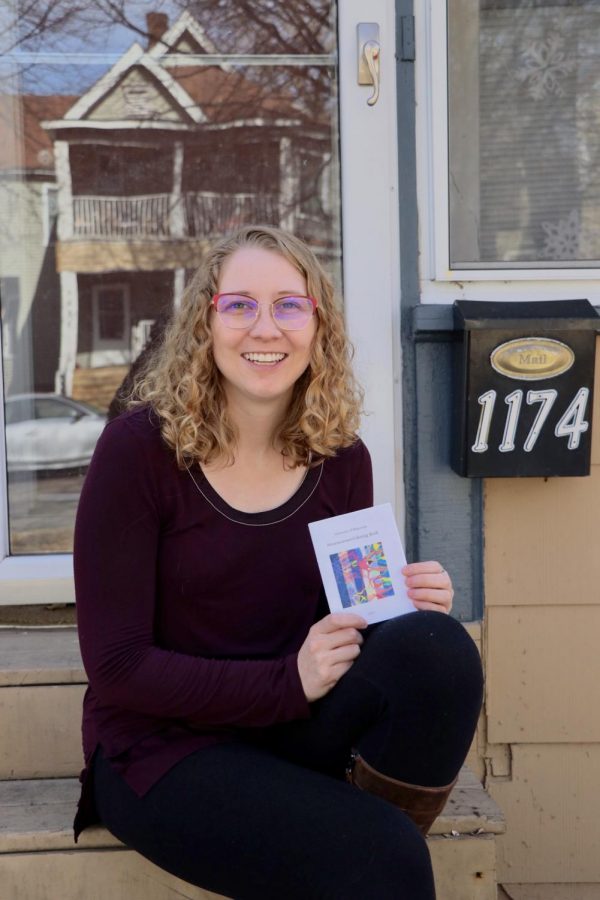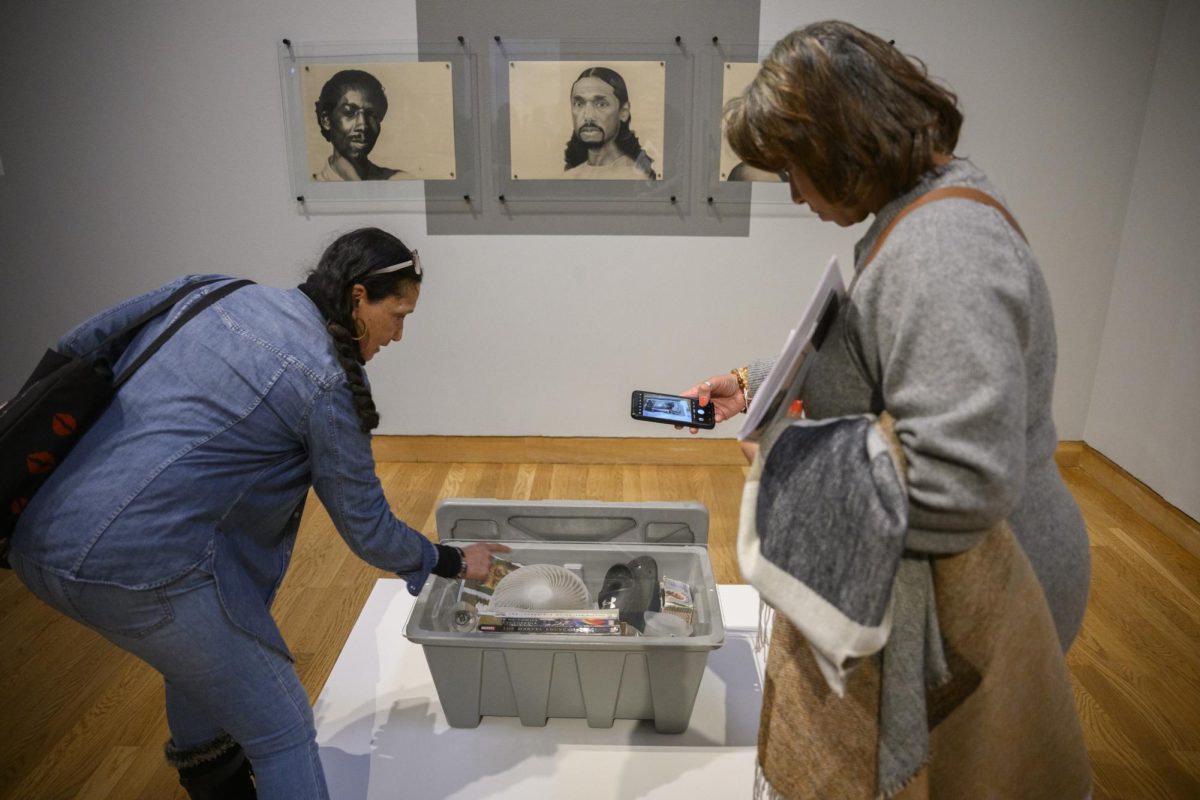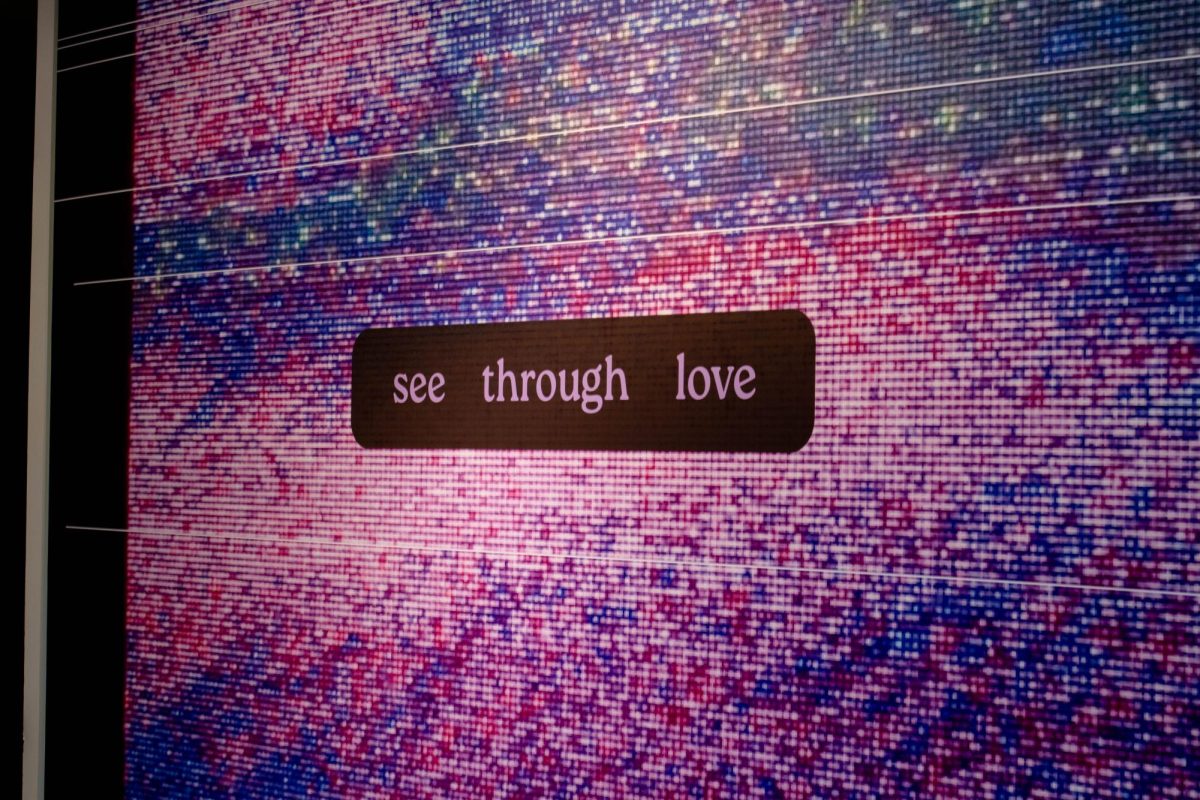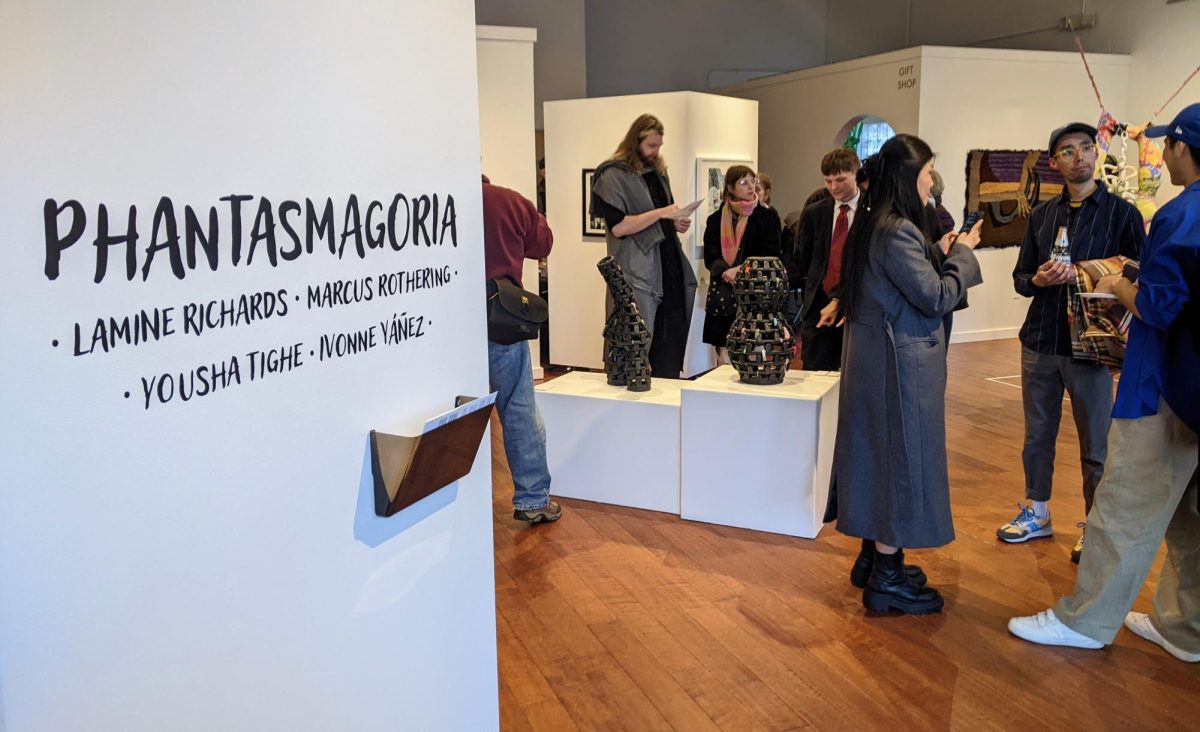Second-year neuroscience graduate student and studio artist Samantha Montoya has found a bridge between her two passions. Working over several visual mediums, including oil, acrylic, and embroidery, Montoya centers much of her work on neuroscience topics and visual concepts.
Montoya’s latest project is the “University of Minnesota Coloring Book,” a coloring book collection based on images from journal articles published by researchers in the University’s neuroscience graduate program.
Originally, the coloring book was to be available to incoming applicants of the neuroscience graduate program as they go through the interview process. Within the neuroscience department, second-year graduate students are in charge of planning the recruitment weekend, and Montoya proposed the coloring book as something to help potential incoming students de-stress.
“I really liked the idea of giving something to de-stress in a really stressful time,” Montoya said. “And I thought to myself, ‘Why don’t we make the neuroscience coloring book for the people interviewing?’ Because it would be nice to have something that shows that we actually care about their mental health when they’re going through what can be an intimidating interview process.”
As there are no in-person interviews this year, Montoya made the coloring book available for digital download on her artist website.
Growing up in Albuquerque, New Mexico, Montoya got into painting at a very young age. While in grade school, she experienced difficulty learning to read. After consulting with a tutor, Montoya’s family discovered that she most likely had Meares-Irlen Syndrome. A condition just being discovered at the time, Meares-Irlen Syndrome is a disorder that causes visual distortion, warping, after images and visual snow and can cause extreme difficulty reading.
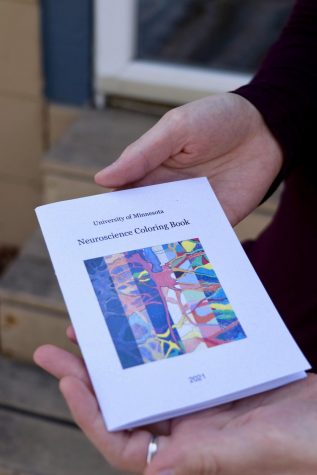
This condition has created challenges for Montoya in her academic career but has also become a point of inspiration. She has focused several of her works and projects on visually representing her experience with the condition and educating people on its nature and potential accommodations.
Montoya’s partner, graphic designer Jacob Bergen, assisted with some of the final formatting and layout of the neuroscience coloring book. Bergen admires Montoya’s work depicting her unique point of view.
“I’m a really big fan of some of her paintings where she paints the world and as she sees it. … The world is kind of contorted or fuzzy a little bit,” he said. “Knowing her, I know that she can see perfectly well, but just understanding how she can see how a lot of people see has given me a better understanding of what she does and what she’s interested in.”
Dr. Cheryl Olman, a psychology associate professor, oversees neuroscience outreach and engagement for the University’s neuroscience graduate program. She champions Montoya’s creativity and humility.
“Sam is a powerful woman, and I’m excited that she’s part of our program. I’d like to see her brag more often about what she accomplishes on campus and off,” she said.
In light of brain awareness week, which takes place March 15-21, Montoya’s coloring book will be part of a University-hosted neuroscience coloring contest. Judged by Montoya, the winner will receive two tickets to the “Mysteries of Your Brain” planetarium show at the Bell Museum.
Montoya hopes to continue the neuroscience coloring book with an annual edition and plans to continue working in her unique sphere of artwork celebrating the beauty of the brain.
“I think it’s really important because it allows people to engage with what can otherwise be a really difficult-to-grasp concept in an interesting and engaging way,” she said. “It also allows for a conversation where the public can speak back with the scientists, and I think that’s also really vital.”


